My First Research Project for BCT; The Standard Works
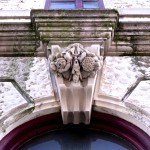 Hello, my name is Zeta Sutcliffe. I was widowed at the end of last year, and decided I needed a project to keep my mind fully occupied, and to fill my evenings. I approached Birmingham Conservation Trust in the hope they would have a suitable volunteer post for me. I discussed my hobbies and interests with Suzanne Carter, and she suggested I might be good at research. My main hobby is genealogy, and I like piecing bits of family history together, so I was thrilled to bits!
Hello, my name is Zeta Sutcliffe. I was widowed at the end of last year, and decided I needed a project to keep my mind fully occupied, and to fill my evenings. I approached Birmingham Conservation Trust in the hope they would have a suitable volunteer post for me. I discussed my hobbies and interests with Suzanne Carter, and she suggested I might be good at research. My main hobby is genealogy, and I like piecing bits of family history together, so I was thrilled to bits!
As a Volunteer Researcher, my first project has been The Standard Works on the corner of Vittoria Street and 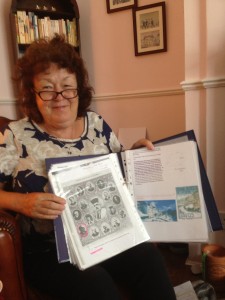 Regent Place, in the Jeweller Quarter. The building has been derelict for many years, and The Ruskin Trust has put in a bid to try to win funding to renovate the building. If they are successful, the Standard Works will be transformed into a specialist college for young people with learning disabilities. There is also mention of a rooftop mini ‘Eden project’, beehives to make their own honey, a bakery on site, cafe, performance area, arts and crafts workshops plus more! They aim to open the Centre in the evening for fee paying adult craft classes. It all sounds exciting, bringing a new lease of life, noise, fun and laughter, to the property once more.
Regent Place, in the Jeweller Quarter. The building has been derelict for many years, and The Ruskin Trust has put in a bid to try to win funding to renovate the building. If they are successful, the Standard Works will be transformed into a specialist college for young people with learning disabilities. There is also mention of a rooftop mini ‘Eden project’, beehives to make their own honey, a bakery on site, cafe, performance area, arts and crafts workshops plus more! They aim to open the Centre in the evening for fee paying adult craft classes. It all sounds exciting, bringing a new lease of life, noise, fun and laughter, to the property once more.
Birmingham Conservation Trust was commissioned to lead on community consultation around the proposals and I was asked to look back in history to see what I could find out about The Standard Works, and what variety of trades were carried out there.
The building was designed by Thomas F Williams, and constructed around 1879-1880. The main tradesmen who remained on site for some time, were Silversmiths, Gold Chain Makers, and Jewellers.
I began my research by looking through Kelly’s and Post Office Directories in the Central Research Library on Broad Street. These books give volumes of information on businesses in the city, as well as home owners, up to 1973, and then they terminate.
From 1880 small jewellery businesses occupied various units in the building, but World War 1, The Slump, and World War 2, had a great effect on things; by the 1950s it was bigger firms that moved in, mainly in the engineering and press work field, although some small pockets of jewellers still appear here and there. Sadly, I have not yet found anyone able to give me any information on who was there from 1973 until its closure, despite the fact the name plaque of Joseph Smith (Jeweller) still hangs at the front door.
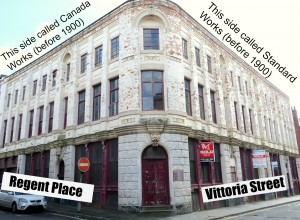 The building seems to have been divided name wise into two main parts at one time. From 1880 Levetus and Blankensee, both listed as jewellers, occupied what they called Canada Works, which would be the units on the corner of the building. Jacob and Goode, appear to be in units along Regent Place, and by 1884 Lionel Spiers had moved into units along Vittoria Street. It was Spiers who renamed the whole building as Standard Works in 1899, when Levetus moved out.
The building seems to have been divided name wise into two main parts at one time. From 1880 Levetus and Blankensee, both listed as jewellers, occupied what they called Canada Works, which would be the units on the corner of the building. Jacob and Goode, appear to be in units along Regent Place, and by 1884 Lionel Spiers had moved into units along Vittoria Street. It was Spiers who renamed the whole building as Standard Works in 1899, when Levetus moved out.
I concentrated on the main occupants from 1880 to 1920. I wanted to see who they were, where they had come from, and what happened to them. Their family names were:
Blankensee – Jews originating from Prussia. For example, Abraham Mayer Blanknsee lived in Edgbaston, employed servants, and died in 1918 leaving over £233,110 according to Probate records.
Levetus -Jews. Brothers Hyman and Edward, whose father Lewis originated from Romania/Moldova. Lewis was a Shochet (one who slaughtered meat for the Jews), a ‘veritable colossus of man, Herculean in proportion, even in his old age.’ They had family connections in Canada, and eventually took their jeweller and electro plating business over to Montreal.
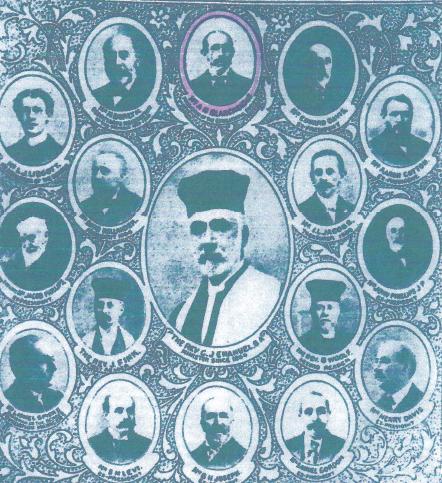 Spiers -Jews. brothers David and Lionel, whose father originated from Lubin in Poland and left over £8000 in 1874 when he died. Their mother Sophia was listed as a Pawnbroker, seems to have originated from Hungary, and in older age became deaf. The eldest brother David died young in Switzerland, probably from TB. Lionel went on to be the most influential person with regards to Standard Works. Without him, the name may never have existed! He died in 1925 and left £173,460.
Spiers -Jews. brothers David and Lionel, whose father originated from Lubin in Poland and left over £8000 in 1874 when he died. Their mother Sophia was listed as a Pawnbroker, seems to have originated from Hungary, and in older age became deaf. The eldest brother David died young in Switzerland, probably from TB. Lionel went on to be the most influential person with regards to Standard Works. Without him, the name may never have existed! He died in 1925 and left £173,460.
Jacob -Jews. Moses Levi Jacob, originated from Cornwall, related to the Joseph family who were one of the first Jewish families to work in Vyse Street. He was a Deaf Mute, keen in small profits and quick returns.
Goode – Quaker. John Goode was a Gold Chain Maker. Son of a local watch maker, Goode went on to build a mansion known as the Moors in Church Lane Handsworth Wood. He died in 1882 and left over £31,336. He is buried at St Paul’s Cemetery in the Jewellery Quarter.
Later occupants replacing Jacob and Goode were –
- Swann and Adams – Brooch Tongue Makers.
- William Albert Swann was a local man, son of a Watch Pendleton Maker.
- Augustus John Adams was a local man, originally from the back to back houses in Cregoe Street.
- Henry H Aston – Wedding Ring Maker. He died in 1869 aged 31, but his family kept the business on in his name until 1910.
This has been a most fascinating journey, and I have barely touched on the detail here. I worked for up to 12 hours a day at times, engrossed in my findings. Some information came from search engines online, including genealogy databases, but the general background came from a book I borrowed called Birmingham Jewry 1740-1930 by Zoe Josephs. I was extremely grateful to be able to use this book, which provided a fountain of knowledge, and without this, my research would not have been so easy.
The people I discovered were not small one man businesses, but employers with a workforce. They were enterprising business men, good salesmen, and forward thinking. Levetus understandably called his section Canada Works because of family links to that country. In fact Hyman travelled to Canada in 1903, and when he returned for a brief visit 4 years later, he had already taken Canadian Nationality. On the other hand, Lionel Spiers was keen on education, and wanted to raise standards through proper training for young apprentices, as well as set out rules and standards for the industry to work to. I believe this is why he called it Standard Works.
None of these people lived in poverty; they all seemed to live well, mainly in very large houses, with servants, nurses, and governesses at home. It’s been fascinating to see where they lived, and sad to discover some of the tragedy when children died, or were killed in World War 1. It brought the families to life for me, and I have grown to respect and appreciate them, almost like old friends. I see Levetus in his section of the building, and Spiers in his. I’ve peeked inside their homes, discovered their family history, met their children, and the staff they employed! Basically, I have enjoyed doing it, and I hope to inspire others with my findings. It’s been hard work, but good fun.


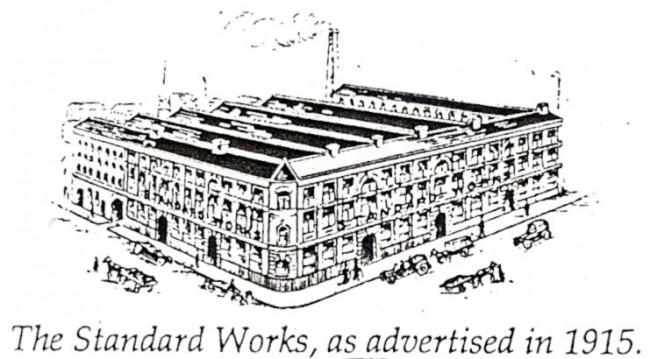
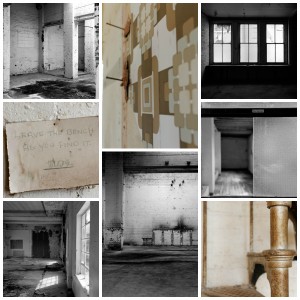

This is really interesting blog. Thank you for the information.
This is really interesting. I was wondering where you found information about Moses Levi Jacob being a deaf mute and where I could find more information about him?
Many Thanks
Dear Rebecca,
I’m afraid I don’t know was the post was written a number of year by a lady who no longer volunteers with us. You might find that she still checks in on here, and may still get back to you, but I will ask Suzanne if she can remember any details.
Wow brilliant blog Zeta, really enjoyed reading about your research. What a fascinating social history the building has.
Thank you, Julie!
Yes, I have a file full of paperwork detailing the family history of each one named.